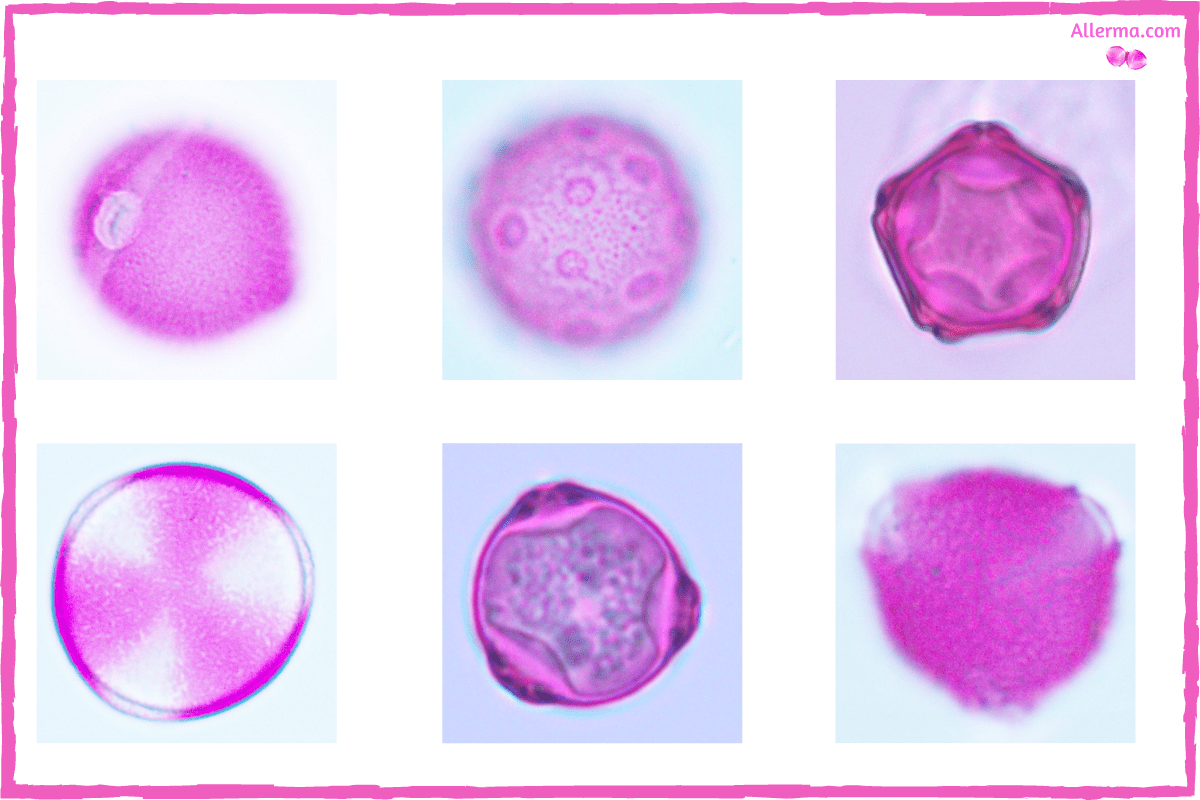Pollen counts as a % of the season’s peak load of the plant.
Follow me on BlueSky – @allerma.bsky.social
Palo Alto Pollen Count Commentary
I do regular air sampling and plant inspection to bring you the most accurate pollen count of Palo Alto. There are about 400 different species of city trees in Palo Alto. Fortunately, only 75 of these species release pollen into the air. Unfortunately, these 75 species make up 55% of the 37,000 city trees in Palo Alto!
The 75 wind-pollinated species belong to 25 genera of trees. To explain this better, let’s take the example of Oak. There are 24 species of the genus Quercus (Oak) in Palo Alto. Some examples of these species are Pin oak, Scarlet oak, Coast live oak, Cork oak, Shumard oak, etc. The pollen of different species of the same genera is not distinguishable when seen from the microscope. Therefore, all pollen counts are observed and reported at the genus level, e.g. “Oak”.
The city’s proximity to green hills, and the Bay makes it susceptible to grass and weed pollen as well.
Cypress, Sequoia, Birch, Oak, Chinese Elm, Olive, Mulberry, Walnut, Chinese Pistache, and Sycamore trees are some of the major sources of pollen in Palo Alto.
Just like the rest of the Bay Area, the pollen count in Palo Alto remains elevated from January to June. After that, during summer and fall, Chinese elm, Casuarina, and privet are the only major sources of pollen left.
Fortunately, there is no ragweed in the city, and residents are spared from its pollen during summer and fall.
Our air sampling location for Palo Alto is:
Garland Dr, Palo Alto, CA 94303
If allergies have adversely impacted your life, you would definitely benefit from the following three guides.
-
Pollen pictures of allergy plants.
The pollen pictures below were taken in my lab using an Olympus compound microscope. To bring clarity to the features of the pollen, different level of digital zoom is used.
-
Pollen allergy: A beginner’s guide with photos.
In his influential book – “The art of war”, general Sun Tzu wrote, ” If you know the enemy and know yourself, you need not fear the results of hundred
-
Grass allergy – A beginner’s guide w/ photos
What is grass allergy? Many allergy sufferers misunderstand grass allergies to be a reaction to the soft green swath that adorns their front lawn, or, the one they see in
Our Methodology
We use a combination of air sampling and plant inspections to identify which plants are releasing pollen.
We refrain from using the traditional high, medium, and low classifications because they are rather meaningless for an allergy sufferer. The concentration scales of high-medium-low are designed for academics and not for allergy sufferers. Besides, what is a low count for one person can be very high for someone with strong allergies.
If you are still curious, you can read more about our methodology here.




